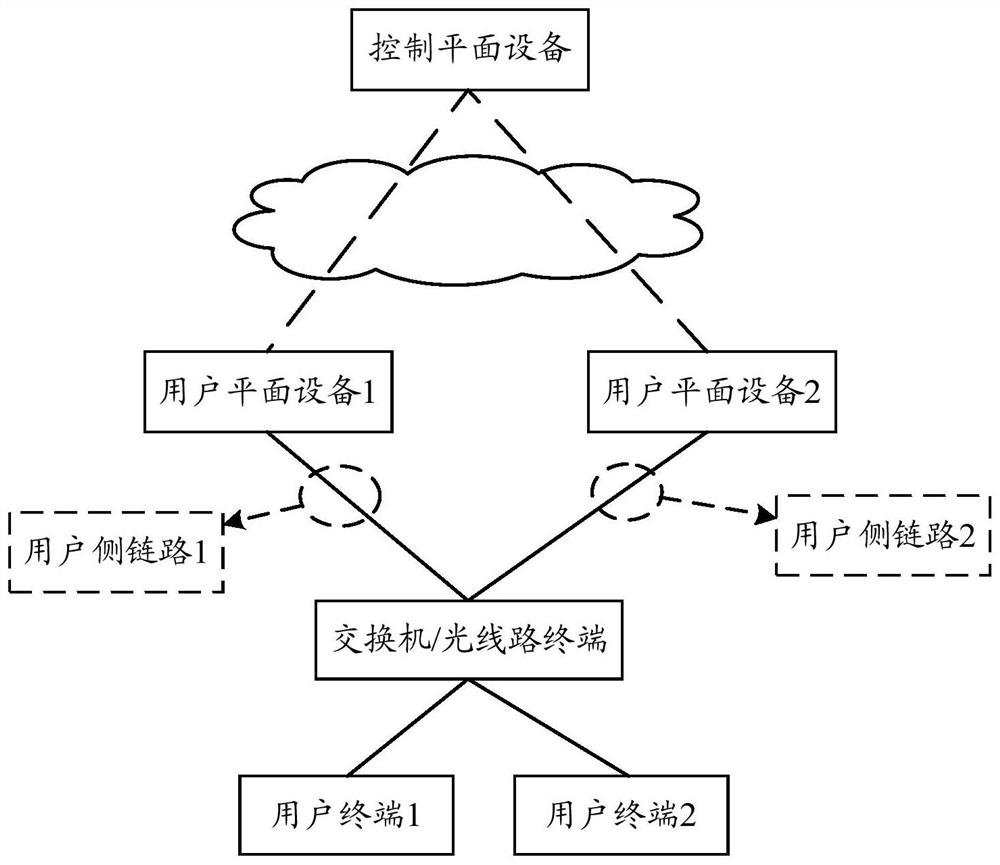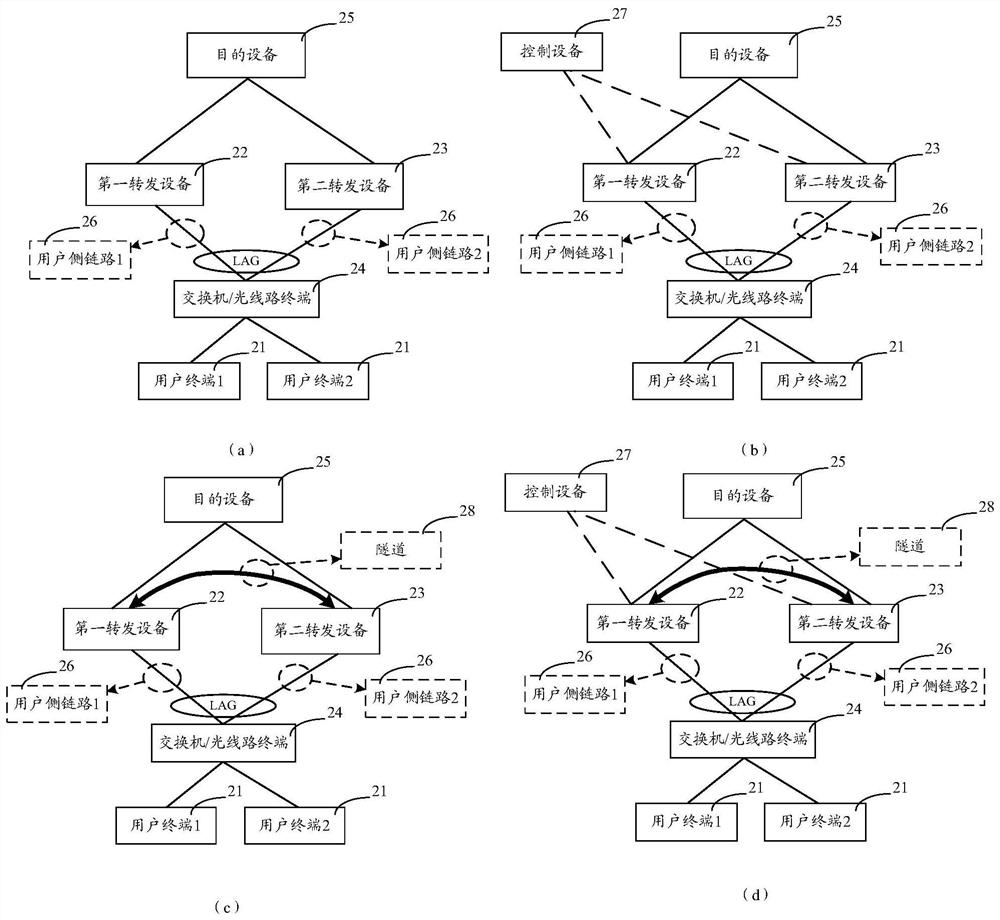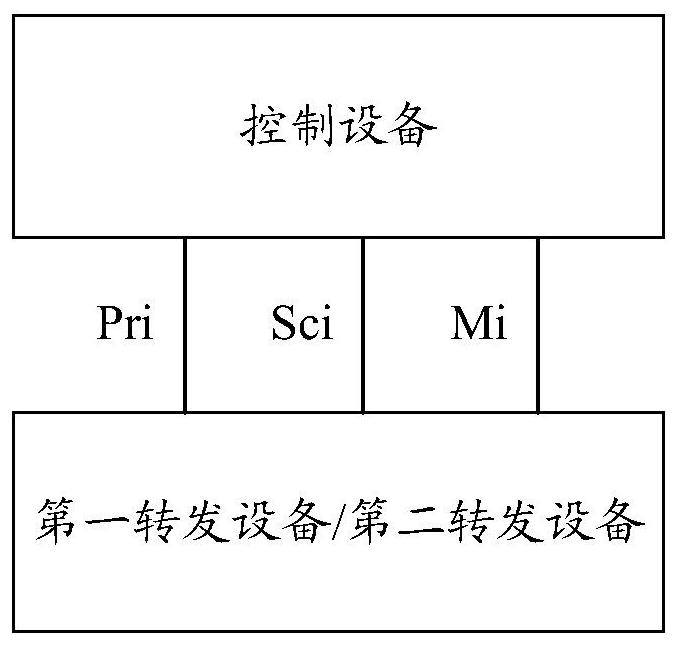Message transmission method, device and system
A message transmission and message technology, applied in the network field, can solve problems such as high link load on the user side and affecting transmission quality
- Summary
- Abstract
- Description
- Claims
- Application Information
AI Technical Summary
Problems solved by technology
Method used
Image
Examples
Embodiment Construction
[0076] The message transmission method, device and system provided in the embodiments of the present application will be described in detail below with reference to the accompanying drawings.
[0077] figure 2 (a) exemplarily shows a schematic diagram of a network architecture of a message transmission system provided by an embodiment of the present application. The network architecture includes multiple user terminals 21 (such as user terminal 1 and user terminal 2 ), a first forwarding device 22 , and a second forwarding device 23 . Each device can be connected through a wired network or a wireless network. The embodiment of the present application does not specifically limit the connection mode between devices.
[0078] The above-mentioned user terminal 21 may be a mobile phone (mobile phone), a tablet computer (pad), a computer with a wireless transceiver function, a personal digital assistant (personal digital assistant, PDA), a smart watch, a netbook, a wearable elect...
PUM
 Login to View More
Login to View More Abstract
Description
Claims
Application Information
 Login to View More
Login to View More - R&D
- Intellectual Property
- Life Sciences
- Materials
- Tech Scout
- Unparalleled Data Quality
- Higher Quality Content
- 60% Fewer Hallucinations
Browse by: Latest US Patents, China's latest patents, Technical Efficacy Thesaurus, Application Domain, Technology Topic, Popular Technical Reports.
© 2025 PatSnap. All rights reserved.Legal|Privacy policy|Modern Slavery Act Transparency Statement|Sitemap|About US| Contact US: help@patsnap.com



